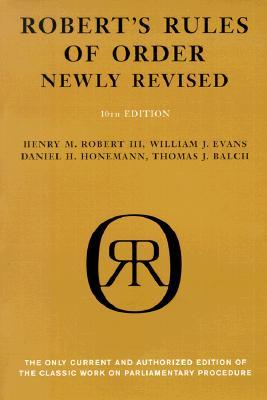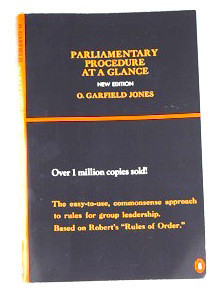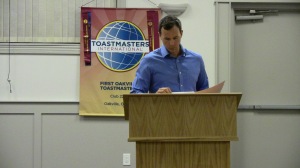That’s the amount of time I have tonight (Feb. 4) to do a half-day workshop on parliamentary procedure at First Oakville Toastmasters.
Of course, that isn’t going to happen but I think I can offer the members an introduction into the the arcane and frightening world of Robert’s Rules of Order.
To do this I’m going to reference a really good slide deck from the Florida Atlantic University student government judicial branch which I found online.
This is an excellent plain-language explanation of why and how we use these formal procedures to get things done.
At Toastmasters we often get new members questioning why we would use Robert’s Rules of Order (RR) to run our weekly business meetings. We often get asked why we would bother to even have business sessions.
Business sessions allow the will of the majority of members to be implemented while respecting the right of the minority to be heard. RR make it easy for groups of individuals to efficiently make group decisions. It prevents the use of illegal actions to sway the group and helps prevent aggressive individuals from taking over the decision-making process.
It’s used by governments, school boards, corporate boards, homeowners’ associations and various professional associations and clubs like our own.
RR aren’t all that difficult to understand and any member who does understand the basic principles will find it easy and even fun to be an active participant in their club or association.
RR spell out how members are to act at meetings (being recognized by the chair before speaking – there are exceptions; stand when speaking; address others by their title and avoid using first names – to help keep comments from being personal…and there’s more but that’s a start).
RR set out when and where meetings take place and who can participate (paid-up members). Members discuss issues by first moving a motion (which is seconded to insure that at least one other person wants to discuss this issue) and then is debated by the assembly.
Moving a motion before talking saves time and provides a necessary focus for group decision-making.
A main motion can be amended only twice and the amendments must modify the main motion in a manner to only change it slightly and not change the main thrust of the motion.
Amendments are seconded and debated in order of second amendment, then first and then, main motion (which by now may or may not be amended depending on the voting done separately for each amendment).
Voting is handled by the chair and most votes (but not all) pass with a simple majority voting in favour.
Voting can be done by a simple direction from the chair for all in favour to say “aye” and all against to say “nah” and a recording of the number, if any, of abstainers.
If a member wants a recorded vote done by counting hands they may so make their request by merely calling for “Division”.
Division comes from an ancient process where the parliamentary members would be physically divided with those in favour on one side of the room and those opposed on the other and then a formal vote would be recorded.
There are other types of motions (subsidiary that changes how the main motion is handled; privileged that concerns matters of great importance – like the room is on fire – and which are unrelated to the pending business and incidental that provides a means of questioning procedure concerning other motions and must be considered before the other motion for example questions of order – in other words are we doing the right thing right now).
Now all of this may seem complicated but it’s not and any member can use RR to participate in business sessions and the more you do it the better you become.hal
At Toastmasters we encourage participation and any member, can at any time, rise to a point of parliamentary inquiry which is a question directed to the chair about parliamentary law or other rules that govern the club meeting.
A point of information is a request directed to the chair for information relevant to the business at hand.
At Toastmasters, no member should be in a position where they aren’t sure of what is happening and this is especially true at Toastmaster business meetings.
By the way when the chair asks the parliamentarian for a comment, the parliamentarian only offers an opinion and it’s up to the chair to make a decision which can (and often is) challenged by the members of the assembly if they don’t like what’s happening.
Learning parliamentary procedures and Robert’s Rules of Order helps us to conduct club business in a friendly (usually) and efficient manner. It keeps us from running afoul of our club charter and makes certain we treat everyone equally and fairly.
This is key: Our executive members do not govern but serve the needs of the members.
It’s up to the members to participate and not leave the decision-making process to a few executives or loud mouths and know-it-alls of which I include myself 🙂 as a charter member in all three categories.






